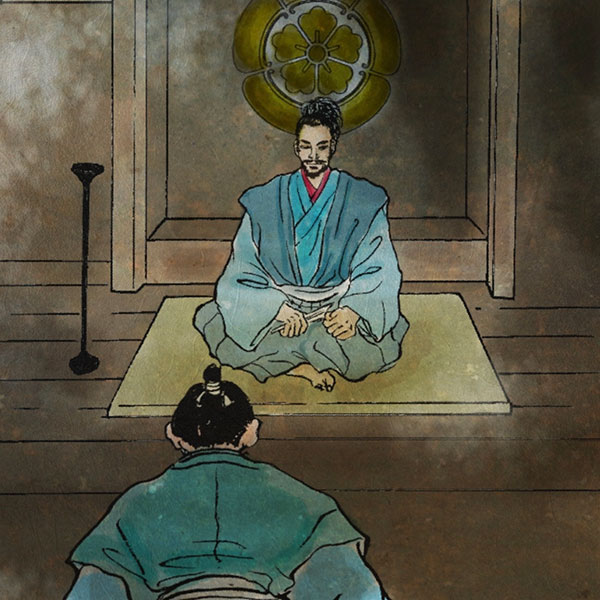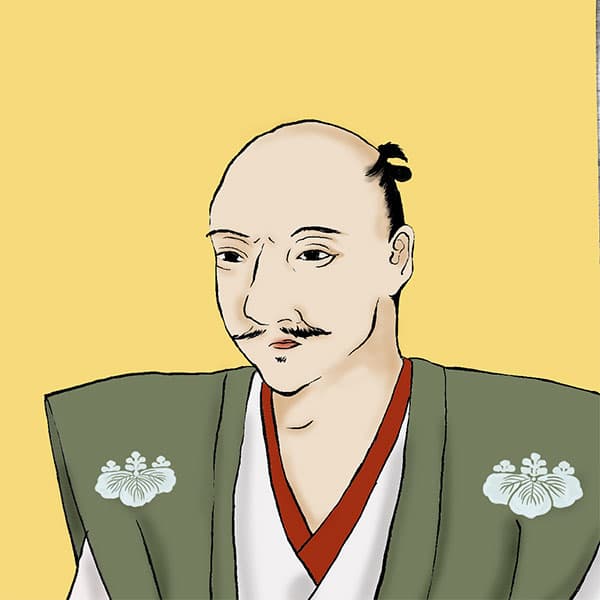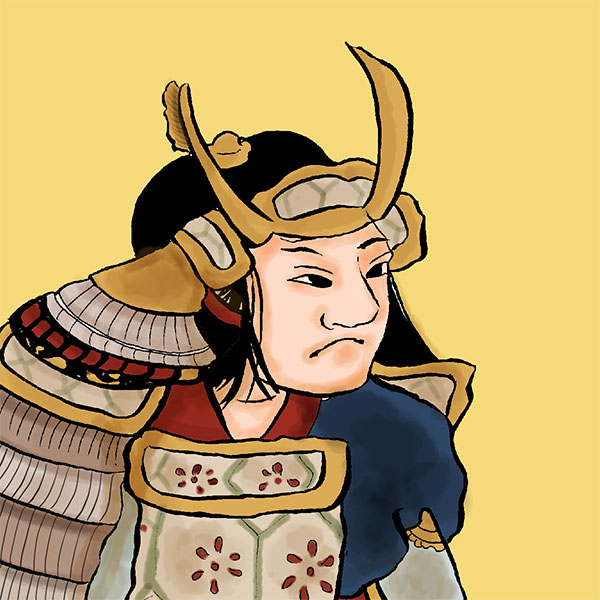Kiyosu Alliance (2/2)Oda Nobunaga and Tokugawa Ieyasu, an alliance that lasted about 20 years

Kiyosu Alliance
- Article category
- case file
- Incident name
- Kiyosu Alliance (1562)
- place
- Aichi prefecture
- Related castles

Kiyosu Castle
- people involved
Considering the relationship between Nobunaga and Ieyasu from the exchange of letters at the time, it seems that the relationship between the two broke down around 1574, by which time Ieyasu had become Nobunaga's subordinate. According to Nobunaga Koki, Nobunaga dispatched reinforcements to Ieyasu in the Battle of Nagashino (Nobunaga/Ieyasu vs. Takeda) in May 1575; There is a description that he was regarded as a lord within Nobunaga's territory. Since Nobunaga helped his subordinates, we can see that a master-servant relationship had developed between Nobunaga and Ieyasu at this point.
Risk of breaking the alliance? Nobuyasu incident
The Kiyosu Alliance had continued relatively peacefully, even though Ieyasu was under Nobunaga, but a major crisis struck. This was the ``Nobuyasu Incident,'' which occurred in 1579, and involved the punishment of Tokugawa Ieyasu's wife, Tsukiyama-dono, and the seppuku incident of his eldest son, Matsudaira Nobuyasu. According to "Mikawa Monogatari" and other sources, the relationship between Nobuyasu and Tokuhime was not very good at that time. It is said that the cause was that Nobuyasu criticized Tokuhime because she had given birth to two girls in a row, or that Tokuhime disliked Nobuyasu because he had a rough and cruel personality. Another reason was that Tsukiyama-dono was trying to break up the relationship between his son and his wife. It is also known from historical materials (diary) from the time that Ieyasu, who was concerned about the relationship between the two, visited Okazaki Castle in an attempt to improve their relationship.
Under these circumstances, Tokuhime sends Nobunaga a letter consisting of twelve articles describing Nobuyasu's misdeeds. The letter describes Nobuyasu's flagrant violent behavior, such as hanging a monk to death during falconry and killing a dancer who was bad at dancing with a bow and arrow.
Nobunaga was furious with Tsukiyama-dono and questioned Tadatsugu Sakai, the messenger entrusted with the letter, about Nobuyasu's conduct. Because Tadatsugu did not protect Nobuyasu and affirmed the 10 rules, Nobunaga ordered Ieyasu to commit seppuku on his son, saying, ``In such a situation, I would be worried about the future.''
Upon receiving this, Ieyasu visited Okazaki Castle on August 3, Tensho 7. Apparently there was a heated argument with Nobuyasu at that time, but the next day Nobuyasu was transferred to Ohama Castle (Aichi Prefecture, Aoumi City). On August 9th, they moved to Horie Castle (Nishi Ward, Shizuoka Prefecture), and then to Futamata Castle (Tenryu Ward, Hamamatsu City, Shizuoka Prefecture). On September 15th, Ieyasu finally ordered Nobuyasu to commit seppuku. Thus, Nobuyasu passed away at the young age of 21. Furthermore, as of August 29, Tsukiyama-dono had been murdered by Ieyasu's vassals.
The above is what is widely known as a common theory. Why does Tsukiyama-dono appear? Some people may think so, but Tsukiyama-dono is the daughter of a senior vassal of Yoshimoto Imagawa and Yoshimoto's niece. Ieyasu had broken up with the Imagawa clan, so even though Tsukiyama-dono was Ieyasu's legal wife, she was not treated well within the family. Even though she was his legal wife, she remained at Okazaki Castle with Nobuyasu instead of Hamamatsu Castle, where Ieyasu was based, and Ieyasu took in concubines one after another. Tsukiyama-dono was dissatisfied with Ieyasu's actions. It is said that his dissatisfaction turned to Nobuyasu and Tokuhime.
Now, regarding the Nobuyasu incident, it is not clear why Nobuyasu had to commit seppuku. There are three theories as to why this is the case:
(1) Conspiracy theory: Tsukiyama-dono tried to draw Nobuyasu in and join the Takeda side in rebelling against Ieyasu. There is also a theory that as a result of a conflict between vassals, Okazaki's vassals picked up Nobuyasu as a rival to Ieyasu, and they fought and lost. Furthermore, Ieyasu gathered his vassals at Okazaki Castle on August 10th and made them swear that they would not have anything to do with Nobuyasu in the future.He also stationed soldiers under his direct command at Okazaki Castle to prevent rebellions, and this action by Ieyasu was considered a rebellion. This is one of the arguments for the theory.
(2) Conspiracy theory: The Takeda clan tried to break up the relationship between Ieyasu and Nobuyasu by spreading the theory that Nobuyasu had betrayed him. It was a plot hatched by the Takeda clan against the Tokugawa clan.
(3) False accusation theory: Sakai Tadatsugu's slander, or Nobunaga comparing Nobuyasu with his son Oda Nobutada, and fearing Nobuyasu's rise, he wanted to get rid of him now.
In recent years, the conspiracy theory is considered to be the most likely, considering that the incident has even resulted in seppuku of the eldest child.
The end of the Kiyosu Alliance - Honnoji Incident
After that, Tokugawa Ieyasu continued to serve Oda Nobunaga as a vassal. In 1582 (Tensho 10), Nobunaga carried out the Koshu conquest and finally destroyed the Takeda clan. At this time, Tokugawa Ieyasu arranged with Nobuaki Anayama and succeeded in conquering Suruga. As a reward, Ieyasu received the province of Suruga.
On May 15 of the same year, Ieyasu visited Nobunaga at Azuchi Castle to express his gratitude for gaining Suruga Province. After receiving a reception from Mitsuhide Akechi, he toured Sakai (Osaka Prefecture) with a small number of his companions. Meanwhile, on June 2nd, the Honnoji Incident occurred in Kyoto, and Nobunaga was killed. Thus, the Kiyosu Alliance came to an end with Nobunaga's death.
Furthermore, upon learning of Nobunaga's death, Ieyasu hurriedly returned to his own country, Mikawa Province (Shizuoka Prefecture), passing through Iga in order to avoid being attacked by Mitsuhide with only a few soldiers. Ieyasu survived because of this successful action known as the "Kami-kun Iga Crossing" with the help of the Iga ninjas. Afterwards, Toyotomi Hideyoshi defeated Mitsuhide, but a three-way battle between the Tokugawa, Uesugi, and Hojo forces, the Tensho Migo War, broke out over the former Takeda territory ruled by Nobunaga. As a result, Ieyasu gained possession of Kai Province and Shinano Province, and when he added his existing territories of Mikawa, Totomi, and Suruga, he expanded his power to the point where he controlled a total of five countries.
After that, Hideyoshi defeated Katsuie Shibata in the ``Battle of Shizugatake'' and rose to prominence. Ieyasu faced Hideyoshi at the Battle of Komaki and Nagakute. Afterwards, as Hideyoshi steadily expanded his influence, Ieyasu swore an oath of servitude to Hideyoshi in 1586. After that, Ieyasu would have to wait until the Battle of Sekigahara, which occurred in 1600 after Hideyoshi's death, to become a ruler of Japan.
Reread the Kiyosu Alliance article
- people involved

- WriterNaoko Kurimoto(Writer)I am a former travel industry magazine reporter. I have loved history, both Japanese and world history, since I was a child. I usually enjoy visiting temples and shrines, especially shrines, and often do ``pilgrimages to sacred places'' themed around historical figures. My favorite military commander is Ishida Mitsunari, my favorite castle is Kumamoto Castle, and my favorite castle ruins is Hagi Castle. My heart flutters when I see the ruins of battle castles and the stone walls of castle ruins.






